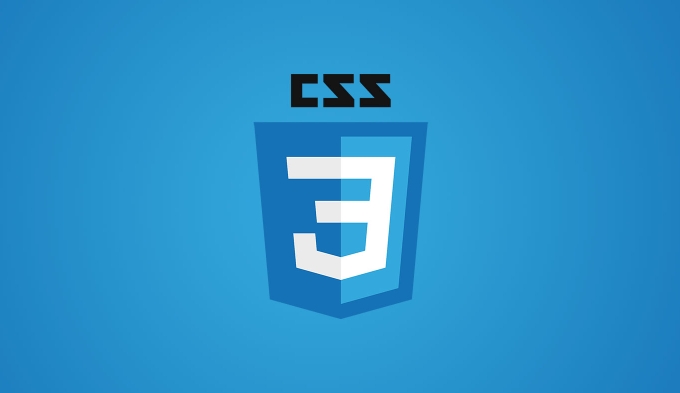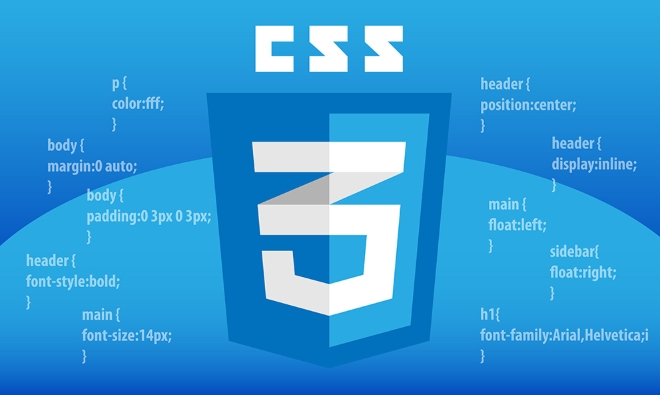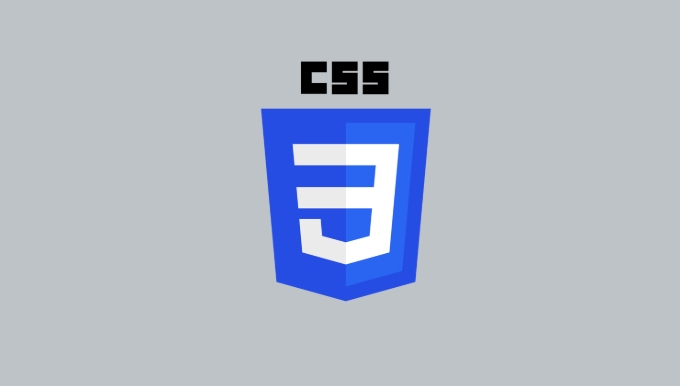How to create a parallax scrolling effect CSS tutorial
Jul 04, 2025 am 02:43 AMThe key to making parallax scrolling effect is to make elements of different layers scroll at different speeds. 1. First, build a multi-layer HTML structure, including background, medium scene and foreground, and use CSS to set the container overflow: hidden and absolute positioning; 2. Then listen to scroll events through JavaScript, use transform: translateY() to dynamically adjust the positions of each layer. The background layer scrolls slowly and the medium scene is slightly faster; 3. Finally, optimize performance, use throttling functions to control the scrolling frequency, compress image resources, and adapt to the mobile terminal, and consider pure CSS solutions to improve compatibility.

It is actually not difficult to do parallax scrolling effect, it can be done with CSS and a little HTML structure. The core is to allow elements of different layers to roll at different speeds to create a three-dimensional sense. Let me tell you how to do it.

1. Basic structure: Multi-layer layout is the key
The basis of parallax scrolling is to divide the page into multiple "layers", such as background, medium shot, and foreground. The scrolling speed of each layer is different, and it looks layered.

The HTML structure can be written like this:
<div class="parallax"> <div class="background"></div> <div class="midground"></div> <div class="foreground"></div> </div>
Then set overflow: hidden and fixed height for .parallax , and the content inside is hidden beyond the part. Each layer covers the entire container with absolute positioning, which facilitates control of scrolling behavior.

2. CSS realizes scrolling speed difference
The core of parallax is to make certain elements scroll slowly or faster than the page. The easiest way is to use transform: translateY() with scrolling events to dynamically adjust the position.
Here is a basic idea (controlled with JavaScript):
window.addEventListener('scroll', function () {
const scroll = window.scrollY;
document.querySelector('.background').style.transform = `translateY(${scroll * 0.5}px)`;
document.querySelector('.midground').style.transform = `translateY(${scroll * 0.8}px)`;
});- The background layer moves slowly (multiply 0.5), and looks farther
- Medium view is slightly faster (multiple 0.8)
- The prospects can be changed or simply remain unchanged
Transparency or scaling can also be set according to the page scrolling ratio to enhance the visual effect.
3. Optimization experience: Don't forget performance and compatibility
Although parallax scrolling looks good, it will stutter if it is not handled well, especially on mobile phones.
A few suggestions:
- Try to use
transformandopacityattributes that will not trigger reordering - Add a throttle function (throttle) to the scroll monitor to avoid frequent triggering
- The image resources should be compressed, and it is best to use
background-size: coverto ensure that it can adapt to various screens. - Consider whether to disable complex animations on the mobile side to improve fluency
If it is just a simple effect, you can also try a pure CSS solution, such as using background-attachment: fixed to achieve the static background scrolling illusion.
Basically that's it. Parallax scrolling looks cool, but in fact the principle is not complicated. The key is that the details are handled in place, otherwise it will easily get stuck or visually confused.
The above is the detailed content of How to create a parallax scrolling effect CSS tutorial. For more information, please follow other related articles on the PHP Chinese website!

Hot AI Tools

Undress AI Tool
Undress images for free

Undresser.AI Undress
AI-powered app for creating realistic nude photos

AI Clothes Remover
Online AI tool for removing clothes from photos.

Clothoff.io
AI clothes remover

Video Face Swap
Swap faces in any video effortlessly with our completely free AI face swap tool!

Hot Article

Hot Tools

Notepad++7.3.1
Easy-to-use and free code editor

SublimeText3 Chinese version
Chinese version, very easy to use

Zend Studio 13.0.1
Powerful PHP integrated development environment

Dreamweaver CS6
Visual web development tools

SublimeText3 Mac version
God-level code editing software (SublimeText3)

Hot Topics
 What is 'render-blocking CSS'?
Jun 24, 2025 am 12:42 AM
What is 'render-blocking CSS'?
Jun 24, 2025 am 12:42 AM
CSS blocks page rendering because browsers view inline and external CSS as key resources by default, especially with imported stylesheets, header large amounts of inline CSS, and unoptimized media query styles. 1. Extract critical CSS and embed it into HTML; 2. Delay loading non-critical CSS through JavaScript; 3. Use media attributes to optimize loading such as print styles; 4. Compress and merge CSS to reduce requests. It is recommended to use tools to extract key CSS, combine rel="preload" asynchronous loading, and use media delayed loading reasonably to avoid excessive splitting and complex script control.
 External vs. Internal CSS: What's the Best Approach?
Jun 20, 2025 am 12:45 AM
External vs. Internal CSS: What's the Best Approach?
Jun 20, 2025 am 12:45 AM
ThebestapproachforCSSdependsontheproject'sspecificneeds.Forlargerprojects,externalCSSisbetterduetomaintainabilityandreusability;forsmallerprojectsorsingle-pageapplications,internalCSSmightbemoresuitable.It'scrucialtobalanceprojectsize,performanceneed
 Does my CSS must be on lower case?
Jun 19, 2025 am 12:29 AM
Does my CSS must be on lower case?
Jun 19, 2025 am 12:29 AM
No,CSSdoesnothavetobeinlowercase.However,usinglowercaseisrecommendedfor:1)Consistencyandreadability,2)Avoidingerrorsinrelatedtechnologies,3)Potentialperformancebenefits,and4)Improvedcollaborationwithinteams.
 CSS Case Sensitivity: Understanding What Matters
Jun 20, 2025 am 12:09 AM
CSS Case Sensitivity: Understanding What Matters
Jun 20, 2025 am 12:09 AM
CSSismostlycase-insensitive,butURLsandfontfamilynamesarecase-sensitive.1)Propertiesandvalueslikecolor:red;arenotcase-sensitive.2)URLsmustmatchtheserver'scase,e.g.,/images/Logo.png.3)Fontfamilynameslike'OpenSans'mustbeexact.
 What is Autoprefixer and how does it work?
Jul 02, 2025 am 01:15 AM
What is Autoprefixer and how does it work?
Jul 02, 2025 am 01:15 AM
Autoprefixer is a tool that automatically adds vendor prefixes to CSS attributes based on the target browser scope. 1. It solves the problem of manually maintaining prefixes with errors; 2. Work through the PostCSS plug-in form, parse CSS, analyze attributes that need to be prefixed, and generate code according to configuration; 3. The usage steps include installing plug-ins, setting browserslist, and enabling them in the build process; 4. Notes include not manually adding prefixes, keeping configuration updates, prefixes not all attributes, and it is recommended to use them with the preprocessor.
 What are CSS counters?
Jun 19, 2025 am 12:34 AM
What are CSS counters?
Jun 19, 2025 am 12:34 AM
CSScounterscanautomaticallynumbersectionsandlists.1)Usecounter-resettoinitialize,counter-incrementtoincrease,andcounter()orcounters()todisplayvalues.2)CombinewithJavaScriptfordynamiccontenttoensureaccurateupdates.
 CSS: When Does Case Matter (and When Doesn't)?
Jun 19, 2025 am 12:27 AM
CSS: When Does Case Matter (and When Doesn't)?
Jun 19, 2025 am 12:27 AM
In CSS, selector and attribute names are case-sensitive, while values, named colors, URLs, and custom attributes are case-sensitive. 1. The selector and attribute names are case-insensitive, such as background-color and background-Color are the same. 2. The hexadecimal color in the value is case-sensitive, but the named color is case-sensitive, such as red and Red is invalid. 3. URLs are case sensitive and may cause file loading problems. 4. Custom properties (variables) are case sensitive, and you need to pay attention to the consistency of case when using them.
 What is the conic-gradient() function?
Jul 01, 2025 am 01:16 AM
What is the conic-gradient() function?
Jul 01, 2025 am 01:16 AM
Theconic-gradient()functioninCSScreatescirculargradientsthatrotatecolorstopsaroundacentralpoint.1.Itisidealforpiecharts,progressindicators,colorwheels,anddecorativebackgrounds.2.Itworksbydefiningcolorstopsatspecificangles,optionallystartingfromadefin






